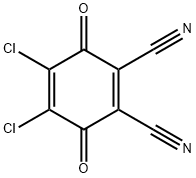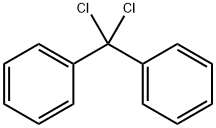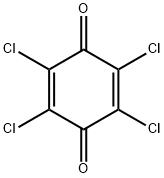2,3-Dichloro-5,6-dicyano-p-benzoquinone , 98% , 84-58-2
Synonym(s):
4,5-Dichloro-3,6-dioxo-1,4-cyclohexadiene-1,2-dicarbonitrile;DDQ
CAS NO.:84-58-2
Empirical Formula: C8Cl2N2O2
Molecular Weight: 227
MDL number: MFCD00001593
EINECS: 201-542-2
PRODUCT Properties
| Melting point: | 210-215 °C (dec.)(lit.) |
| Boiling point: | 301.8±42.0 °C(Predicted) |
| Density | 1.7500 (estimate) |
| storage temp. | Store below +30°C. |
| solubility | Soluble in benzene, methanol, acetic acid and dioxane.Slightly soluble in chloroform,, dichloromethane. |
| form | Crystalline Powder or Crystals |
| color | Yellow to orange |
| Water Solubility | reacts |
| Sensitive | Moisture Sensitive |
| Merck | 14,3063 |
| BRN | 747939 |
| InChIKey | HZNVUJQVZSTENZ-UHFFFAOYSA-N |
| CAS DataBase Reference | 84-58-2(CAS DataBase Reference) |
| NIST Chemistry Reference | 1,4-Cyclohexadiene-1,2-dicarbonitrile, 4,5-dichloro-3,6-dioxo-(84-58-2) |
| EPA Substance Registry System | 1,4-Cyclohexadiene-1,2-dicarbonitrile, 4,5-dichloro-3,6-dioxo- (84-58-2) |
Description and Uses
2,3-Dichloro-5,6-dicyano-1,4-benzoquinone (DDQ) has a variety of applications. DDQ is a deprotection agent for ketals, acetals, and thioacetals. It is a useful electron transfer reagent for synthesis of quinolones and an oxidizing agent used to synthesize steroids. Additionally, DDQ is used with Ph3P to synthesize 1,2-benzisoxazoles.
An oxidizing agent, especially in steroid synthesis.
2,3-Dichloro-5,6-dicyano-1,4-benzoquinone is used as a reagent for oxidative couplings and cyclization reactions and dehydrogenation of alcohols, phenols and steroid ketones. It is also used in the synthesis of 1,2-benzisoxazoles. It is a useful electron-transfer reagent for synthesis of quinolines from imines and alkynes or alkenes.
Safety
| Symbol(GHS) |  GHS06 |
| Signal word | Danger |
| Hazard statements | H301 |
| Precautionary statements | P264-P270-P301+P310-P405-P501 |
| Hazard Codes | T |
| Risk Statements | 25-29-41-37/38-20/21-23/24/25 |
| Safety Statements | 22-24/25-37-45-36/37-26-36/37/39 |
| RIDADR | UN 3439 6.1/PG 3 |
| WGK Germany | 3 |
| RTECS | GU4825000 |
| F | 21 |
| TSCA | Yes |
| HazardClass | 6.1 |
| PackingGroup | II |
| HS Code | 29269095 |




